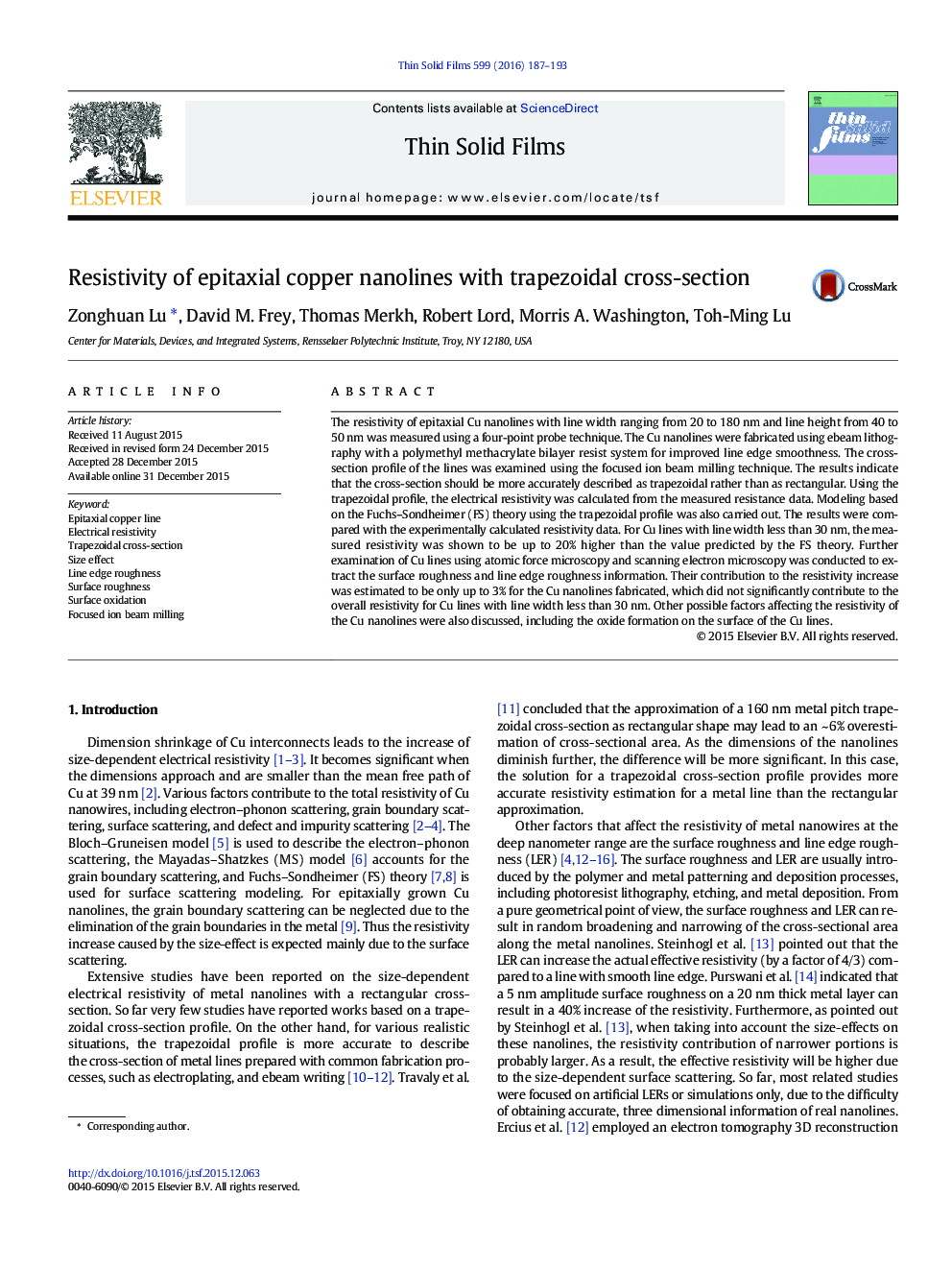| کد مقاله | کد نشریه | سال انتشار | مقاله انگلیسی | نسخه تمام متن |
|---|---|---|---|---|
| 1664311 | 1518010 | 2016 | 7 صفحه PDF | دانلود رایگان |
• Epitaxial copper nanolines were fabricated using ebeam lithography.
• The effect of line cross-section profiles on electrical resistivity was studied.
• Trapezoidal cross−section gives better resistivity estimation for lines down to 20 nm.
• Impact of surface roughness and line edge roughness to resistivity is small.
• Oxidization layer has an effect on the resistivity increase.
The resistivity of epitaxial Cu nanolines with line width ranging from 20 to 180 nm and line height from 40 to 50 nm was measured using a four-point probe technique. The Cu nanolines were fabricated using ebeam lithography with a polymethyl methacrylate bilayer resist system for improved line edge smoothness. The cross-section profile of the lines was examined using the focused ion beam milling technique. The results indicate that the cross-section should be more accurately described as trapezoidal rather than as rectangular. Using the trapezoidal profile, the electrical resistivity was calculated from the measured resistance data. Modeling based on the Fuchs–Sondheimer (FS) theory using the trapezoidal profile was also carried out. The results were compared with the experimentally calculated resistivity data. For Cu lines with line width less than 30 nm, the measured resistivity was shown to be up to 20% higher than the value predicted by the FS theory. Further examination of Cu lines using atomic force microscopy and scanning electron microscopy was conducted to extract the surface roughness and line edge roughness information. Their contribution to the resistivity increase was estimated to be only up to 3% for the Cu nanolines fabricated, which did not significantly contribute to the overall resistivity for Cu lines with line width less than 30 nm. Other possible factors affecting the resistivity of the Cu nanolines were also discussed, including the oxide formation on the surface of the Cu lines.
Journal: Thin Solid Films - Volume 599, 29 January 2016, Pages 187–193
